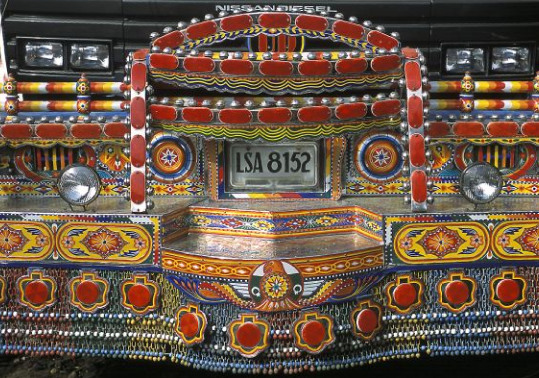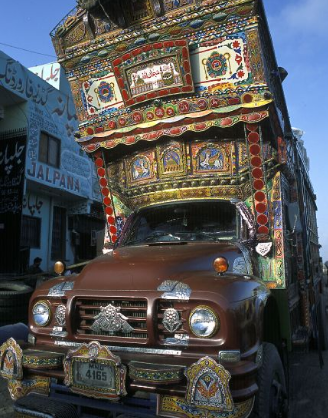http://www.newint.org/issue378/exposure.htm'We are at the mercy of the river. Sometimes it spares us the agony of shifting out. Sometimes it doesn't. But almost always it haunts us.' Zoinuddin is a grizzled 70 years old. He is one of the people who live on the temporary islands of the River Brahmaputra, which are constantly flooded. I first met him when I was on an assignment for Outlook magazine. I came back with enough pictures for my magazine. But I returned to the same place a year later to photograph independently. It was then that I saw this sunken boat being pulled out of the water. The immense labour put in by these people to retrieve the boat struck me as the perfect symbol of their daily struggle for survival. It was as if through this one picture I had captured the essence of the lives of the people of the temporary islands of the Brahmaputra. Swapan Nayak, India
Author: Shahidul Alam
Imaging Famine and other events
![]()
Born Aid 20. The Commission on Africa. Live 8. Make Poverty History. The G8
Summit in Gleneagles. We are witnessing renewed debate about global poverty,
disasters and development, especially in Africa. Coming two decades after
the Ethiopian famine of the mid-1980’s the time is ripe for a
reconsideration of the power and purpose of disaster pictures given the way
the images of the Ethiopian famine spawned the original Band Aid/Live Aid
phenomenon.
http://www.imaging-famine.org/
Imaging Famine is one of several intriguing events I’ll be involved with in
September 2005. The event in New York is not public, so I’ve left out the
details, but I will be there in case anyone wants to meet up.
5th and 6th September: Imaging Famine Conference
The Newsroom. Guardian. London. UK
contact: Dave Clark, Bolton University: dj at djclark.com
http://www.imaging-famine.org/
*8th September: Panel Discussion: Imaging Development*
*Open University Campus, **Milton Keynes**. **UK***
*contact: Helen Yanacopulos, Open University: H.Yanacopulos at open.ac.uk *
*http://www.devstud.org.uk/Conference05/abstracts/PED.htm *
10th September: Symposium, A Critical Evaluation of Photographic
Commissions
Sunderland University. Sunderland. UK
contact: Bas Vroege, Paradox: Ebv at paradox.nl
http://www.theiprn.org/temp/media/pdf/folder.pdf
12th ? 14th September: New York
17th and 19th September: 15th Videobrasil International
Electronic Art Festival
Sesc Pomp?ia, S?o Paulo. Brazil
contact: Luciana Gomide, Video Brasil: *fcfcom at uol.com.br*
www.videobrasil.org.br <http://www.videobrasil.org.br>**
**
22nd September: Launch of Internatioanal Touring Exhibition: Tales From a
Globalising World
Drik Gallery, Dhaka, Bangladesh
contact: Rezaur Rahman, Drik: reza at drik.net
http://www.foto8.com/reviews/V2N3/globalizing.html
24th September: National Geographic’s All Roads Film Festival
Egyptian Theatre: Los Angeles. USA
contact: Alexandra Nicholson, National Geographic: anichols at ngs.org
http://www.nationalgeographic.com/allroads/schedules_la.html
26th September: Presentation: “In Search of the Shade of the Banyan Tree”
UCLA. Los Angeles. USA
contact: Angilee Shah: angshah.asiamedia at gmail.com
29th September: Conference: Free Media
The Norwegian Institute of Journalism
contact: Solberg Oona, MFA: oona.solberg at mfa.no
http://www.ij.no/friemedier.htm
It was Drik’s birthday yesterday! Sweet Sixteen!
Best wishes,
Shahidul
ps: we’ve started a data entry unit and are looking for work. So if you have
any ideas…
Flying Decadence
If ever I’d wanted to savour the decadence of flying in a private jet, this was it. The F28 seats 78, less one for the flight engineer. I had the choice seat, 1F, right hand window seat, perfect for viewing the Everest. As it turned out, it didn’t matter too much. There were only four other passengers, and we could have taken any seat we chose, left, right, window, and aisle. Had it been a long flight, I would have sprawled across three seats and snored away.Service was excellent. Captain Enam was a photographer and we had fun talking pictures. Never before have I known each passenger in my flight. No queues on arrival, baggage on the belt, even before we’d arrived. Wonderful. Except of course for Biman or the environment. A conservative estimate of a flight to Kathmandu costs Taka 2 lakh. That’s Taka 40,000 per passenger on flight 703. The enormous environmental damage for ferrying five people to a neighbouring country was staggering.
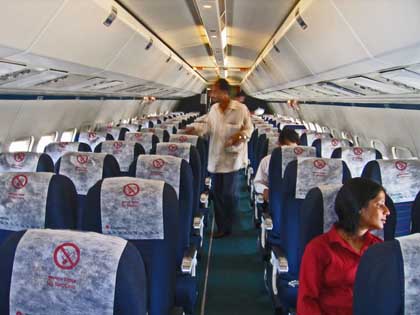
The F28 we were flying was old, water dripped onto the seats, the shuddering panels had withstood daily wear and tear for some 35 years. Still, Bangladesh had paid some nine crore (ninety million) taka for this craft.
I could hear the mumbling in the ground. Cautious comments about how top management never consulted the rest of the staff, how decisions were made on political rather than technical or economic grounds. Rama, a Nepali passenger whose father worked in Cosmic Air commented on how they had expected the flight to be packed because the afternoon flight of Cosmic Air had been cancelled. She was surprised that despite such numbers there were two flights to Kathmandu on the day.
The comments then veered to Biman as a whole. “Amra Borishale batash ani nei” (We only transport air to Barisal and back, there are no passengers), said a Biman official. “Chowdhury shahab er bari Borishale, oi flight ki ar thaman jaibo (Mr Chowdhury the minister- is from Barisal, fat chance you have of stopping those flights).
I enjoyed my flight. I bet the two cockroaches who kept me company did too.
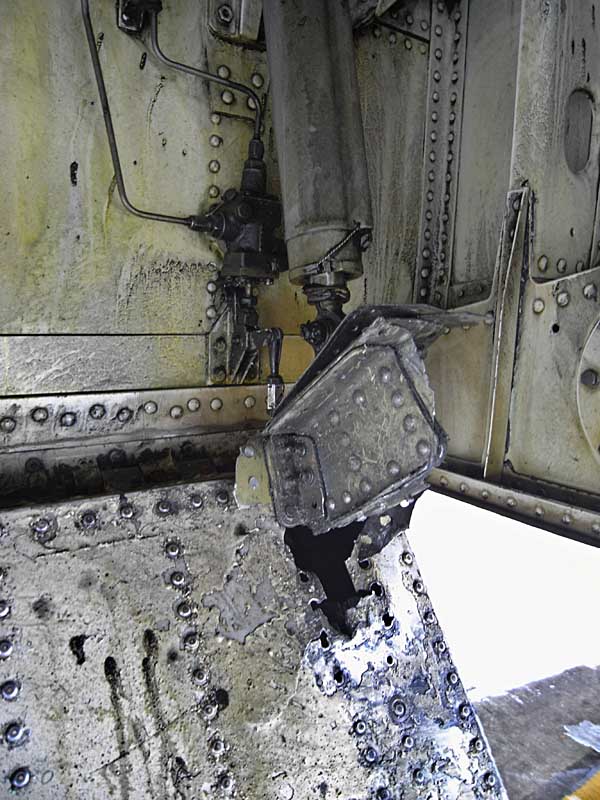
Chobi Mela photographers excel at Nat. Geo.
You may be forgiven for thinking that the results of the National Geographic All Roads project (http://www.nationalgeographic.com/allroads/) had been fixed by me. Two out of the four main awardees and two out of the five honourable mentions were from my list! Those of you who were here for Chobi Mela III will recognise the work of three of the photographers listed here. Shehzad was not involved in the festival, but has been a regular contributor to Drik for many years. Neo spent a year at Pathshala as a Fredskorpset participant. I am enclosing my introductions to the photographers that I had submitted to the National Geographic. The festival opens at the Egyptian Theater in LA on the 21st September 2005. Or else you could come to the 2nd part of the festival at the National Geographic headquarters at Washington D.C. from the 29th September to the 1 st October. There is a morning seminar on the 30th. You will get to meet All Roads Advisory Board members, photo program awardees, magazine editors, filmmakers, and artists from around the world. The blurb from Geographic: Photographer Panel Discussion *"Camera and Culture: The myth of objective documentation"* Is documentary photography inherently objectifying? Can comprehensive documentation be done through non-native eyes? Is there an unspoken universal morality in documentary work? Please join us for a candid and interactive panel discussion exploring these issues and more at both festival venues. Panelists will include *All** Roads Photographers Program 2005 Awardees*, world-renowned photographer * Reza*, and award-winning International Editor & Curator *Shahidul Alam*; the discussion will be moderated by National Geographic Magazine, Senior Editor *John Echave*. Please see below for times at each location: *L.A.**:* Saturday September 24, 2-3:15 pm, Egyptian Theater or *D.C.:* Saturday Oct.1, 2-3:15 pm Grosvenor Auditorium And now the photographers: Neo Ntsoma (http://www.chobimela.org/g_sa_neo.htm): Neo Ntsoma is a complex person. High strung, energetic, intense, passionate, laughing, crying, running, leaping, she is in the middle of everything and everywhere. A spring ready to uncoil. She is also deceptively perceptive. Having faced racism, in every guise, she has toughened herself to face life's challenges. But it is her black identity that has emerged as the soul within her work. She rejoices in her colour and rejoices in colour. Her search for identity within the black South African youth, is no nostalgic trip down memory lane, but rather a buoyant leap at the crest of the wave of youth which captures the energy, the dynamism, the joy of a youth determined to find its own expression. It is the raw energy of her work that attracts me. Sudharak Olwe (http://www.chobimela.org/g_bd_abir.htm): Olwe's photographs have a Dickensian construction that reflect the complexities of the lives he portrays. Fine detail. Frames crammed with information. Seemingly superfluous data spilling over the rim of the frame. Photographs charged with an energy that perhaps talk of the people he portrays. People who eke out everything they can from a life that has had the nutrients pulled out a long time ago. With visual elements jostling for space, Olwe's multilayered images reflect the layered hierarchy of a class and caste system that have permanently relegated those in the bottom of the rung. A rung is perhaps a deceptive metaphor, as a ladder suggests the ability to climb. For Olwe's characters, there is no exit. No happy ending. Tomorrow is no different from today. So the characters themselves, squeeze every inch out of life. Ironically, in dealing with a life with very limited options, they live life to the full. Much as the frames of Olwe's construction. Abir Abdullah (http://www.chobimela.org/g_bd_abir.htm): There are few photographers I have come across who have maintained as high a level of integrity as Abir Abdullah. I have observed him as a student, as a fellow photographer, as a colleague, a fellow tutor and a friend. At all stages, he has been exemplary in the way he has upheld the values that photojournalists live by. A fine photographer, Abir is also a sensitive individual whose work reflects the attachment he has for his subjects. Though he is currently employed as a wire photographer, his approach has never been superficial, and he has relied on his ability to build relationships with his subjects. It is this sensitivity, and the respect that he has for people that I feel comes through in Abir's work, and is eventually the underlying strength of his photography. Shehzad Noorani (http://www.fiftycrows.org/photoessay/noorani/index.php): Noorani's life has shaped much of what he photographs. A child worker who got caught raiding a neighbour's kitchen for food, is an unlikely candidate for a successful career in photography. But statistics are very poor at predicting life as it unfolds. A need to feed the family led to Shehzad having to ensure that the money kept flowing in. This he did with consummate ease by being one of those rare photographers who always deliver on time, to specification and to highly exacting standards. This thorough professional however, is also a skilled artist, who has combined his human skills with a wonderful eye that finds things other eyes may have missed. It is the subaltern that Shehzad has photographed, but not through pitiful eyes, or some romantic notion of charity, but through a genuine understanding of what being poor is. His tenacity, his ability to push himself and his unusual duality between the disciplined professional and the gifted artist, makes Shehzad special. Dear Shahidul: We would like to thank you for taking the time to send in your nominations for the 2005 class of the *All** Roads Photographers Program*. On Monday July 18th four Awardees, and five Honorable Mentions were selected from a very talented and diverse pool of nominees. As a matter of fact, having five Honorable mentions is a testimony to the high quality of the photoessays. The final awardees are: *Marcela Taboado*: Women of Clay (Mexico); *Sudharak Olwe*: In search of Dignity and justice: the untold story of Mumbai's conservancy workers* *(India); *Neo Ntsoma* South African Youth ID ? Kwaito Culture (South Africa); and *Andre Cypriano*: Rocinha, An Orphan Town ( Brazil). And the honorable mentions are: *Shehzad Noorani:* The Children of Black Dust ? That child who wants to live (Bangladesh), *Abir Abdullah*: Old Dhaka (We were born here and will die here?) (Bangladesh) , *Walter Mesquita:*Viva Favela Project (BrazilMahalla,) *Rena Effendi:* Faces of Change (Azerbaijan) , * Gia Chkhatarashvili:* Ushguli, A Village at a Crossroad (Rep. of Georgia) We were most pleased with the nominations and encourage you to please start thinking of qualified photographers for next year! Warm Regards, Chris Rainier and Eduardo Abreu All Roads Photographers Program
Chobi Mela and Bangladeshi photographers excel at National Geographic
You may be forgiven for thinking that the results of the National Geographic All Roads project had been fixed by me. Two out of the four main awardees and two out of the five honourable mentions were from my list! Those of you who were here for Chobi Mela III will recognise the work of three of the photographers listed here. Shehzad was not involved in the festival, but has been a regular contributor to Drik for many years. Neo spent a year at Pathshala as a Fredskorpset participant. I am enclosing my introductions to the photographers that I had submitted to the National Geographic. The festival opens at the Egyptian Theater in LA on the 21st September 2005. Or else you could come to the 2nd part of the festival at the National Geographic headquarters at Washington D.C. from the 29th September to the 1 st October. There is a morning seminar on the 30th. You will get to meet All Roads Advisory Board members, photo program awardees, magazine editors, filmmakers, and artists from around the world. The blurb from Geographic: Photographer Panel Discussion *"Camera and Culture: The myth of objective documentation"* Is documentary photography inherently objectifying? Can comprehensive documentation be done through non-native eyes? Is there an unspoken universal morality in documentary work? Please join us for a candid and interactive panel discussion exploring these issues and more at both festival venues. Panelists will include *All** Roads Photographers Program 2005 Awardees*, world-renowned photographer * Reza*, and award-winning International Editor & Curator *Shahidul Alam*; the discussion will be moderated by National Geographic Magazine, Senior Editor *John Echave*. Please see below for times at each location: *L.A.**:* Saturday September 24, 2-3:15 pm, Egyptian Theater or *D.C.:* Saturday Oct.1, 2-3:15 pm Grosvenor Auditorium And now the photographers: Neo Ntsoma: Neo Ntsoma is a complex person. High strung, energetic, intense, passionate, laughing, crying, running, leaping, she is in the middle of everything and everywhere. A spring ready to uncoil. She is also deceptively perceptive. Having faced racism, in every guise, she has toughened herself to face life's challenges. But it is her black identity that has emerged as the soul within her work. She rejoices in her colour and rejoices in colour. Her search for identity within the black South African youth, is no nostalgic trip down memory lane, but rather a buoyant leap at the crest of the wave of youth which captures the energy, the dynamism, the joy of a youth determined to find its own expression. It is the raw energy of her work that attracts me. Sudharak Olwe: Olwe's photographs have a Dickensian construction that reflect the complexities of the lives he portrays. Fine detail. Frames crammed with information. Seemingly superfluous data spilling over the rim of the frame. Photographs charged with an energy that perhaps talk of the people he portrays. People who eke out everything they can from a life that has had the nutrients pulled out a long time ago. With visual elements jostling for space, Olwe's multilayered images reflect the layered hierarchy of a class and caste system that have permanently relegated those in the bottom of the rung. A rung is perhaps a deceptive metaphor, as a ladder suggests the ability to climb. For Olwe's characters, there is no exit. No happy ending. Tomorrow is no different from today. So the characters themselves, squeeze every inch out of life. Ironically, in dealing with a life with very limited options, they live life to the full. Much as the frames of Olwe's construction. Abir Abdullah: There are few photographers I have come across who have maintained as high a level of integrity as Abir Abdullah. I have observed him as a student, as a fellow photographer, as a colleague, a fellow tutor and a friend. At all stages, he has been exemplary in the way he has upheld the values that photojournalists live by. A fine photographer, Abir is also a sensitive individual whose work reflects the attachment he has for his subjects. Though he is currently employed as a wire photographer, his approach has never been superficial, and he has relied on his ability to build relationships with his subjects. It is this sensitivity, and the respect that he has for people that I feel comes through in Abir's work, and is eventually the underlying strength of his photography. Shehzad Noorani: Noorani's life has shaped much of what he photographs. A child worker who got caught raiding a neighbour's kitchen for food, is an unlikely candidate for a successful career in photography. But statistics are very poor at predicting life as it unfolds. A need to feed the family led to Shehzad having to ensure that the money kept flowing in. This he did with consummate ease by being one of those rare photographers who always deliver on time, to specification and to highly exacting standards. This thorough professional however, is also a skilled artist, who has combined his human skills with a wonderful eye that finds things other eyes may have missed. It is the subaltern that Shehzad has photographed, but not through pitiful eyes, or some romantic notion of charity, but through a genuine understanding of what being poor is. His tenacity, his ability to push himself and his unusual duality between the disciplined professional and the gifted artist, makes Shehzad special. Dear Shahidul: We would like to thank you for taking the time to send in your nominations for the 2005 class of the *All** Roads Photographers Program*. On Monday July 18th four Awardees, and five Honorable Mentions were selected from a very talented and diverse pool of nominees. As a matter of fact, having five Honorable mentions is a testimony to the high quality of the photoessays. The final awardees are: *Marcela Taboado*: Women of Clay (Mexico); *Sudharak Olwe*: In search of Dignity and justice: the untold story of Mumbai's conservancy workers* *(India); *Neo Ntsoma* South African Youth ID ? Kwaito Culture (South Africa); and *Andre Cypriano*: Rocinha, An Orphan Town ( Brazil). And the honorable mentions are: *Shehzad Noorani:* The Children of Black Dust ? That child who wants to live (Bangladesh), *Abir Abdullah*: Old Dhaka (We were born here and will die here?) (Bangladesh) , *Walter Mesquita:*Viva Favela Project (BrazilMahalla,) *Rena Effendi:* Faces of Change (Azerbaijan) , * Gia Chkhatarashvili:* Ushguli, A Village at a Crossroad (Rep. of Georgia) We were most pleased with the nominations and encourage you to please start thinking of qualified photographers for next year! Warm Regards, Chris Rainier and Eduardo Abreu All Roads Photographers Program
The Power of the Image
Not Alone
http://www.newint.org/issue377/exposure.htmI took this photo on World Women's Day, 8 March 2004. It shows survivors of acid attacks. Such attacks are still made against women who are accused of violating social codes. Here they are staging an 'awareness drama'. Amra aar eka noi ('We Are Not Alone') was written and performed by survivors. Their dreams have been shattered, their faces and bodies charred by a liquid fire - acid. But their indomitable courage and will-power to rebuild their lives and move forward is strengthened by everyone telling them they are not alone. All the performers use masks, but at the end of the drama they take the masks from their faces and introduce themselves to the audience. They are so emotional. I took the photo to show this emotion, which I think is very difficult to describe unless you have felt it yourself. Abir Abdullah Bangladesh
Masterpieces To Go
Another non-terrorist Pakistani story.
Under the shade of a colossal banyan tree, Karachi truck painter Haider Ali, 22, is putting the finishing touches on his latest creation: a side-panel mural of Hercules subduing a lion, rendered in iridescent, undiluted hues of purple, yellow, red and green. His 10-year-old nephew, Fareed Khalid, applies a preparatory undercoat of white paint to the taj, the wooden prow that juts above the truck?s cab like a crown. Like Ali?s father, who first put a brush into his son?s hand at age eight, Haider is carrying on a master-apprentice tradition with Fareed, who spends his afternoons in the painter?s workshop after mornings in school.
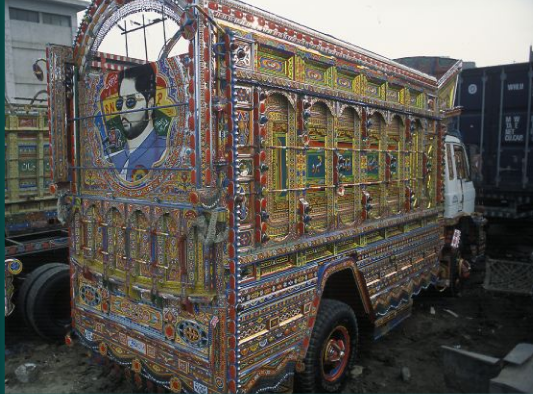
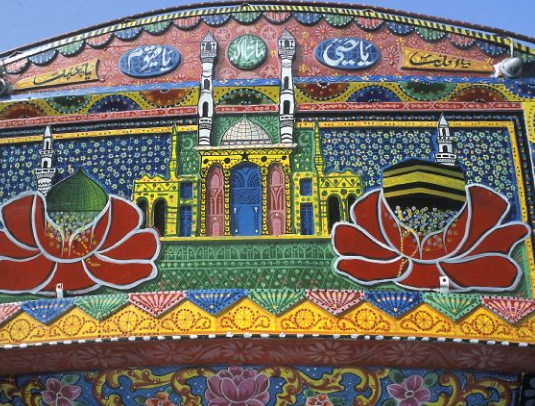
Like Every Day
As the exhibition by women photographers celebrating International
Women’s Day, ends at the Drik Gallery, an Iranian woman explores the
everyday lives of women. Shadi Ghadirian was one of the photographers
featured in the recent Chobi Mela III.

http://www.newint.org/issue374/exposure.htm
I am a woman and I live in Iran. I am a photographer and this is the
only thing I know how to do. I began work after completing my studies.
Quite by accident, the subjects of my first two series were ‘women’.
However, every time I think about a new series, in a way it still
relates to women.
Perhaps the only idea outsiders have of Iranian women is a black chador.
I try to portray all our aspects. And this completely depends on my own
situation. When I did this series of photographs, I had just graduated.
The duality of life at that time provided the motive: one cannot say to
what time the woman belongs; a photograph from two eras; a woman who is
dazed; a woman who is not connected to the objects in her possession.
After marriage it was natural that vacuum cleaners and pots and pans
found their way into my photographs; a woman with a different look; a
woman who, no matter in what part of the world she is living, still has
these kinds of apprehensions. At this moment a woman is consigned to a
daily repetitive routine. For this reason I named the series Like Every
Day.
Now I know what I wish to say with my photographs. Many of them have
shown women as second-class citizens or the censorship of women. I wish
to continue speaking about women because I still have a lot to say.
These are my words as a woman and the words of all the other women who
live in Iran, where being a woman imposes its own unique system. The
photographs are not authentic documentation. I take them in my studio,
but they deal with current social issues all the same.
Shadi Ghadirian, Iran
Where Elbows Do The Talking
![]()
It was a mixed week. Sandwiched in between the hartals and the ekushey
barefoot walks and the launch disaster, were news items that led to very
different emotions at Drik. Shoeb Faruquee, the photographer from Chittagong, won the 2nd prize in the Contemporary Issues, Singles,
category of the world’s premier photojournalism contest World Press
Photo. The photograph of the mental patient locked by the legs as in a
medieval stock, is a haunting image that is sure to shake the viewer.
However, the stark black and white image tells a story that is far from
black and white. In a nation with limited resources, medical care for
all is far from reality. Expensive western treatment is beyond the reach
of most, and has often been shown to be flawed. Alternative forms of
treatment is the choice of many. The fact that the boy photographed was
said to have been healed, further complicates the reading of this image.
Shoeb is one of many majority world photographers who have attempted to
understand the complexities of their cultures, which rarely offer
simplistic readings.
It was later in the week, that Azizur Rahim Peu, told me that the
affable contributor to Drik, Mufty Munir, had died after a short illness
at the Holy Family Hospital. I would contact Mufty when I was in
trouble, needing to send pictures to Time, Newsweek or some other
publication. We would work into the night at the AFP bureau, utilising
the time difference, to ensure the pictures made it to the picture desk
in the morning. Occasionally, while hanging out at the Press Club
waiting for breaking news, we would dash off together. Mufty
uncomfortably perched on the back of my bicycle and me puffing away
trying to get to the scene in time.
Wire photography is about speed, and their photographers are known for
being pushy, but this shy, quiet, self effacing photographer made his
way to the top through the quality of his images. We had to push him to
have his first show in 1995, which our photography coordinator Gilles
Saussier and I curated. The show at the Alliance was a huge success, but
Mufty was not impressed by the excitement the show had created. He
simply wanted to get on with his work.
He did have problems with authority, or rather, authority had problems
with him. Despite his shyness, he was a straight talking photographer,
who didn’t hesitate to protest when things weren’t right. Not being the
subservient minion the gatekeepers of our media are accustomed to, he
often got into trouble. But the clarity of his protests played an
important role in establishing photographers’ rights. In the abrasive
world of press photography, where elbows do much of the talking, this
gentle talented practitioner will be dearly missed.
Unknown to the rest of us, the brother of Rob, the gardener at Drik,
died in the launch that sank in the storm at the weekend.

